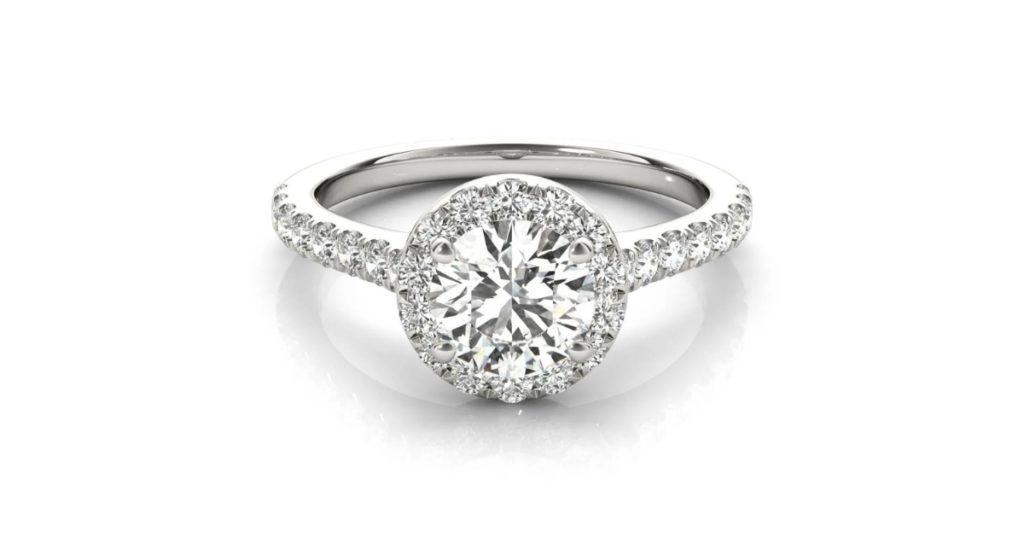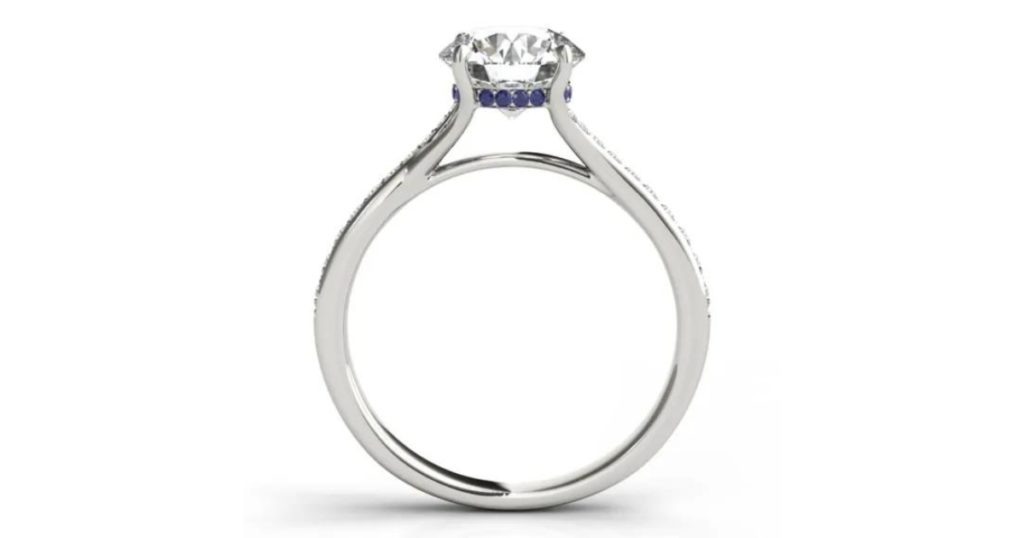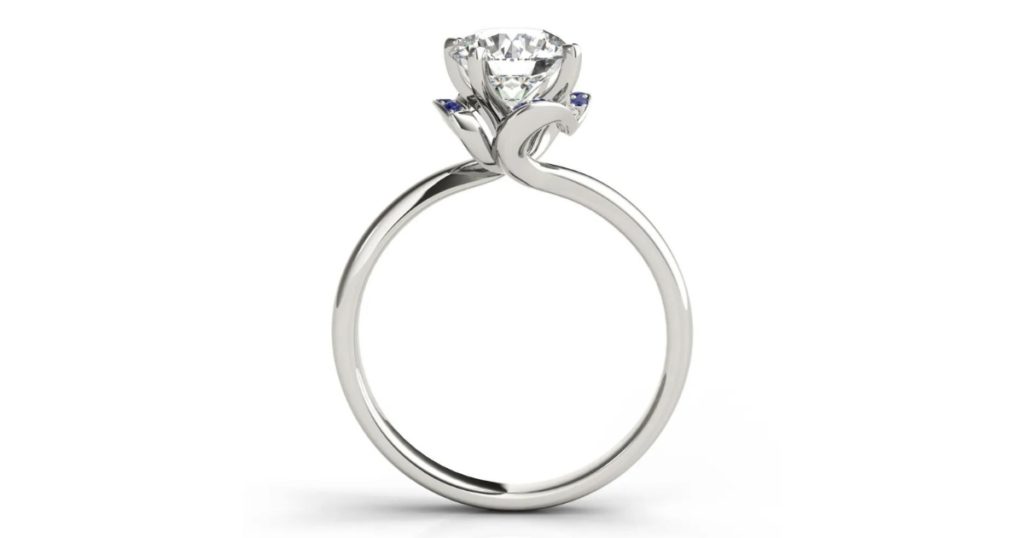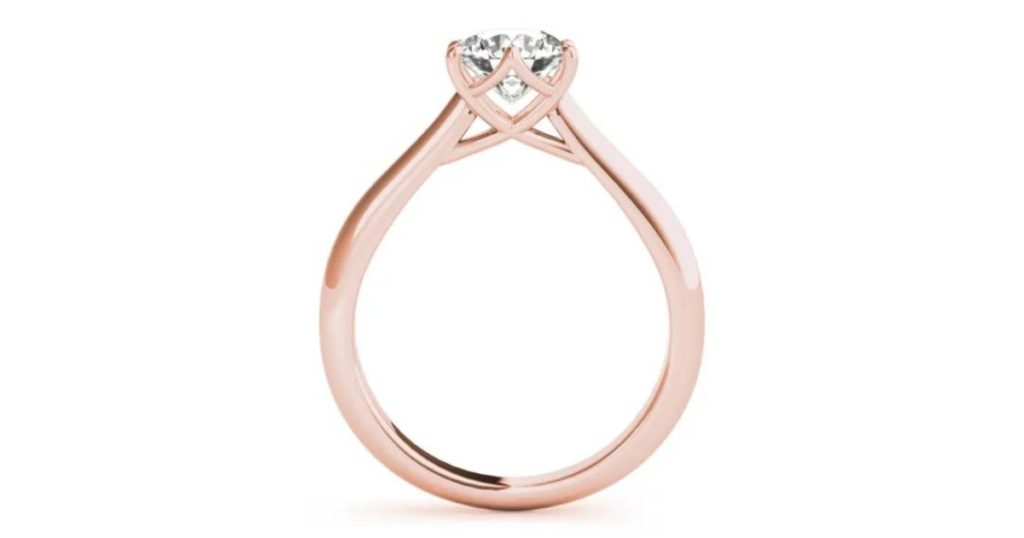There are many types of ring band styles to choose from, which we know can be pretty overwhelming.
You might have picked out the perfect affordable lab grown diamond for your engagement ring and couldn’t be happier. You’ve fallen in love with the brilliance and shine and can’t wait to flash it to all your friends and family.
Not so fast! Although an integral part of your engagement ring, choosing the diamond is only half the challenge when purchasing a ring. You still have to consider your ideal engagement ring band style and engagement ring setting.
Confused and overwhelmed by where you should start? We get it; there are so many engagement ring styles that it can be challenging to know where to begin. Clean Origin has you covered, so keep reading to find out what engagement ring band style might be right for you!
What is a Ring Band?

The engagement ring band is the metal band that goes outside the engagement ring. The band adds stability to your ring, which is especially important if you’re planning to wear it all day. With a band, the weight of the diamond is distributed across more surface area, which means less weight is placed directly on your finger. This helps reduce stress on the skin, which can cause pain and even damage over time. It also ensures that your diamond stays in place, so you don’t lose it.
Popular metals for the engagement ring band include yellow gold, white gold, rose gold, and platinum, and there are numerous band styles you can choose from that allow you to customize your ring further.
What is a Wedding Band?

A wedding band is a ring that symbolizes the eternal bond of marriage. It’s worn on the fourth finger of the left hand because ancient Romans once believed that this finger contained a vein that led straight to the heart.
A wedding band differs from other rings in that it is usually made of gold, which is the most durable metal and is worn by both men and women. Wedding bands are often plain or simple in design with clean lines but can also be ornate with diamonds or other precious stones.
The ring band is the primary feature of the wedding band, and some couples choose wedding bands that match, It is more accepted today to have a wedding band be a supporting actor to glitzy engagement rings. For this reason, the wedding band and other types of ring bands have many similar styles.
What Are Different Ring Designs?
Some of the most popular engagement ring designs are solitaire, halo, three-stone, vintage, and eternity bands. Below, we’ll cover what makes each of these styles unique.
The Solitaire Ring Style

The solitaire ring is one of the American culture’s most iconic symbols of love, commitment, and tradition. It’s a timeless sign that this person will be your partner for life—and it has been since its inception.
This style is perfect for those who want a low-key yet classic and stunning wedding ring. The solitaire ring style has a simple band with one center stone, hence the name Solitaire. Solitaire settings allow the center diamond as no other gemstones are distracting from it.
Additionally, simple bands allow you to go crazy with the shape of the diamonds. Why not highlight your love with a heart-shaped diamond? Because the overall appearance of solitaire bands is quite simple, your diamond will get all the attention.
The Halo Ring Style
The halo engagement ring style has a very distinct look. It is a simple, elegant, and classic design that anyone can wear with almost any outfit. The halo design starts with a single diamond set in the middle of a band. This single diamond is surrounded by smaller diamonds that form a circle around it, creating a halo effect around the center stone.
Halo engagement rings are available in all sorts of different halo ring styles and can include:
The Classic Halo

The Classic Halo has a traditional prong setting with pave diamonds surrounding the center stone. The pave diamonds can also line the rest of the wedding band to create a glistening covered-in diamond effect.
The Hidden Halo

The Hidden Halo engagement ring style is a classic choice for those who want something traditional but with an edge.
When you first look at a hidden halo engagement ring, it appears as if it is only a solitaire setting. However, the halo is hidden within the prong basket below; hence the halo is hidden until viewing it from the side.
The Double Halo

The Double Halo creates stunning engagement rings that aren’t afraid to bring the glamour.
Instead of a straightforward halo around your center stone, you’ll find two bands of melee diamonds. Just be sure that your halos are smaller diamonds than the usual halo diamond, as you don’t want the melee diamonds to overshadow your center stone.
The Flower Halo

Are you looking for engagement rings that invoke the call of the wild while reminding you to stop and smell the roses now and then? Look no further than flower halo engagement rings!
Flower halo rings incorporate wavy or twisted bands to mimic vines, while different shaped melee diamonds are used to simulate the petals of a flower.
Three-Stone Setting Ring Style

The three-stone setting ring style is gorgeous and elegant to show off the three most essential stones in your life: your partner, your commitment to that person, and your love for each other. This type of ring has three main components: the center stone, which is usually set on its own in a prong or bezel setting; two side stones that flank the center stone (and may be set in a prong or bezel), often with a small amount of space between them; and then a band that goes around all three pieces. If you’re looking for something even more distinctive, you might also consider a two stone engagement ring.
Vintage Band Styles

A vintage-style ring setting has been popular for generations and is making a deserved comeback.
A primary characteristic of this style is the thin, delicate band compared to other kinds. This makes sense because if you want to show off your center stone and you don’t want to distract from them with thick bands!
Many vintage band styles are reminiscent of the Victorian time period and feature fillagree bands in either yellow gold, white gold, or platinum for a band that is as unique as the woman wearing it.
Eternity Band Ring Styles

Eternity bands are a style of wedding ring that feature a continuous line of diamonds that go all the way around the entire ring. They can be any width and any length, but they’re typically wide and short so as to maximize the number of diamonds that can fit on the band.
The eternity band is a classic style for wedding bands as there is no center diamond that steals all of the attention. An Eternity band can be either thin or thick and are addictively stackable. This results in a hip wedding band that allows your personal style to shine through and is the perfect ring for maximum overall sparkle.
Top Engagement Ring Settings

In addition to the plentiful engagement ring styles available, there is also a surplus of settings to choose from. The setting of a ring is a part of the band that holds it in place on your finger. The gemstones are often set into this part. Popular setting styles include:
Bezel Setting

A bezel setting is a type of ring setting in which the stone is held in place by a rim of metal that wraps around the sides and top of the gem, holding it in place. The wall surrounding the stone can be straight or curved, and the bezel may or may not have an edge to it.
Bezel settings can be utilized for wedding bands as the diamond will sit flush against the ring’s metal, allowing it to become snag-free and sit comfortably in the metal band.
Channel Setting

Channel settings create a thin channel of diamonds that can either wrap entirely or halfway around the wedding band or ring for a continuously beautiful line of diamonds.
A channel setting is a beautiful choice to highlight a primary diamond while maintaining the security of the smaller melee diamonds.
Tension Setting
A tension setting ring is a setting for a diamond in a ring. It’s called a “tension” setting because the diamond is held in place by tension—the forces that hold the diamond together are greater than those that keep it from falling out of the setting.
Tension settings are usually used to set a diamond in an engagement ring. The main advantage of this type of setting is that it allows more light to pass through the stone, making it look bigger and brighter than it would if it were set with prongs or bezel edges. A tension setting is particularly stunning for diamond rings instead of wedding bands, as you would want your wedding band to sit comfortably flush against your finger.
Prong Setting

A prong setting ring is a setting that uses four prongs or more to hold the diamond in place. The prongs should be symmetrical and evenly spaced on the ring’s shank, and they should all be of equal size. The diamond should also be held securely between two of the prongs, and it should be set at an angle of about 30 degrees from the horizontal plane.
The prong setting is one of the most popular styles for engagement rings because it’s very secure and easy to clean. In addition, it can help to accentuate the shape of your diamond.
Because it lifts the diamond off of the band to display it, the prong setting is not ideal for a wedding band and would much better suit rings or fine jewelry that want to display one or more diamonds.
Cathedral Setting

A cathedral ring setting is a type of ring setting that has a dome-like shape. The name comes from the fact that churches with a pointed top are called cathedrals. Cathedral rings get their name because they resemble these churches in that they have a pointed tip and are often high and spacious.
Again, much like the prong and tension setting, cathedral settings are not well suited to wedding bands as they would highlight the diamond instead of supporting the primary ring’s glamour.
Listen to Your Heart When Considering a Wedding Ring Band.
Indeed, numerous engagement ring styles have a certain Je ne sais quos about them. They inspire conversation and illicit ‘Ooohs’ and ‘Ahhs’ from people passing by. Ultimately, you should buy the ring band that speaks most to you.
Plus, if you receive your ring only to find that maybe you prefer a different style, you can quickly return it within 100 days at no cost to you.
So go ahead and check out our many types and styles of ring bands. Between traditional cuts, timeless designs, and different types, you’re sure to find a band that will perfectly complement your diamond in no time.



